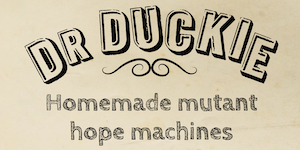
In the Mood for Love is one of my favourite films, so I was happy when Sight & Sound asked me to review Tony Rayns’s new monograph about it. The book appears in the BFI’s Film Classics strand (to which J.M. Tyree and I have contributed our own blatherings about The Big Lebowski). Here, with the permission of Sight & Sound, is the full review from the March 2016 issue of the magazine.
Wong Kar Wai’s In the Mood for Love (2000) is about two neighbours in 1962 Hong Kong – Mrs Chan (Maggie Cheung) and Mr Chow (Tony Leung) – struggling to deal with the realisation that their spouses are having an affair. The film achieved classic status with extraordinary speed: within just a few years of its release, it seemed as if it had always been there. Much of this is surely to do with its elegance and restraint, its buttoned-up yearning punctuated with depth charges of emotional devastation. It traffics in murmured conversations and glancing physical exchanges, quiet hopes, withheld contact and enduring regrets. It is unexuberant. Strange, then, to think that it nearly included scenes of its leads smuggling livefowl into a hotel room and imitating John Travolta and Uma Thurman in Pulp Fiction.
Such test sequences, however, are typical of how Wong works. His idiosyncratic production process leaves an unusually large amount of leeway for major revisions of story, tone and even casting before, during and after the shoot. Tony Rayns gives a valuable overview of this approach in his account of In the Mood for Love for the BFI Film Classics series – it’s one of numerous ways in which his intimate familiarity with Wong’s career benefits this breezy, informative study. Until a falling-out in 2008, Rayns – whose expertise on East Asian cinema is matched by few Western critics – was involved with Wong’s work in several ways. As well as covering it as a journalist, he contributed subtitles and press material for the director’s output and had numerous personal conversations with Wong and his collaborators.
So Rayns is confident here in laying out the film’s unpredictable evolution, notably its origins as part of a planned feature called Summer in Beijing that was to be a lighthearted love letter to mainland China. There’s valuable insight too on the indirect influence of the writer Liu Yi-Chang, whose words survive as on-screen quotations even though the specific story that initially inspired Wong can no longer be discerned in the film. And the pedigree of the soundtrack’s signature waltz is usefully unpacked. Rayns’s familiarity also allows him to tease out intertextual connections between In the Mood for Love and other Wong works, such as Days of Being Wild (1990). And his deep knowledge of East Asian history and culture allows for enriching contextualisation of the film’s portrayal of everyday life, touching on everything from the period significance of noodle stands to the class implications of Mrs Chan’s unforgettable wardrobe.
Rayns is also attentive to what he calls the film’s “distinctive aesthetic… a kind of ostentatiously selective presentation of the action” characterised by “evasions, elisions, exclusions, disjunctions and enigmas” expressed through fragmented chronology, mise en scène, décor and more. It’s an approach, he rightly concludes, that evokes “the imperfect retrieval of a memory”. One would like to have heard more about this – about the film’s remarkable grasp of how cinema can imitate the operation of the mind rather than just the eye – and about other things too, such as how Chan and Chow’s role-play approximations of their spouses’ affair overlaps with the practices of cinema, or how their delicate interaction embodies the complex and shifting politics of the time. But with more than half of the book devoted to précis and miscellaneous observations, there’s limited space here for sustained critical argument. A disappointment, perhaps. But perhaps exclusions and disappointments are fitting ingredients when it comes to In the Mood for Love.

